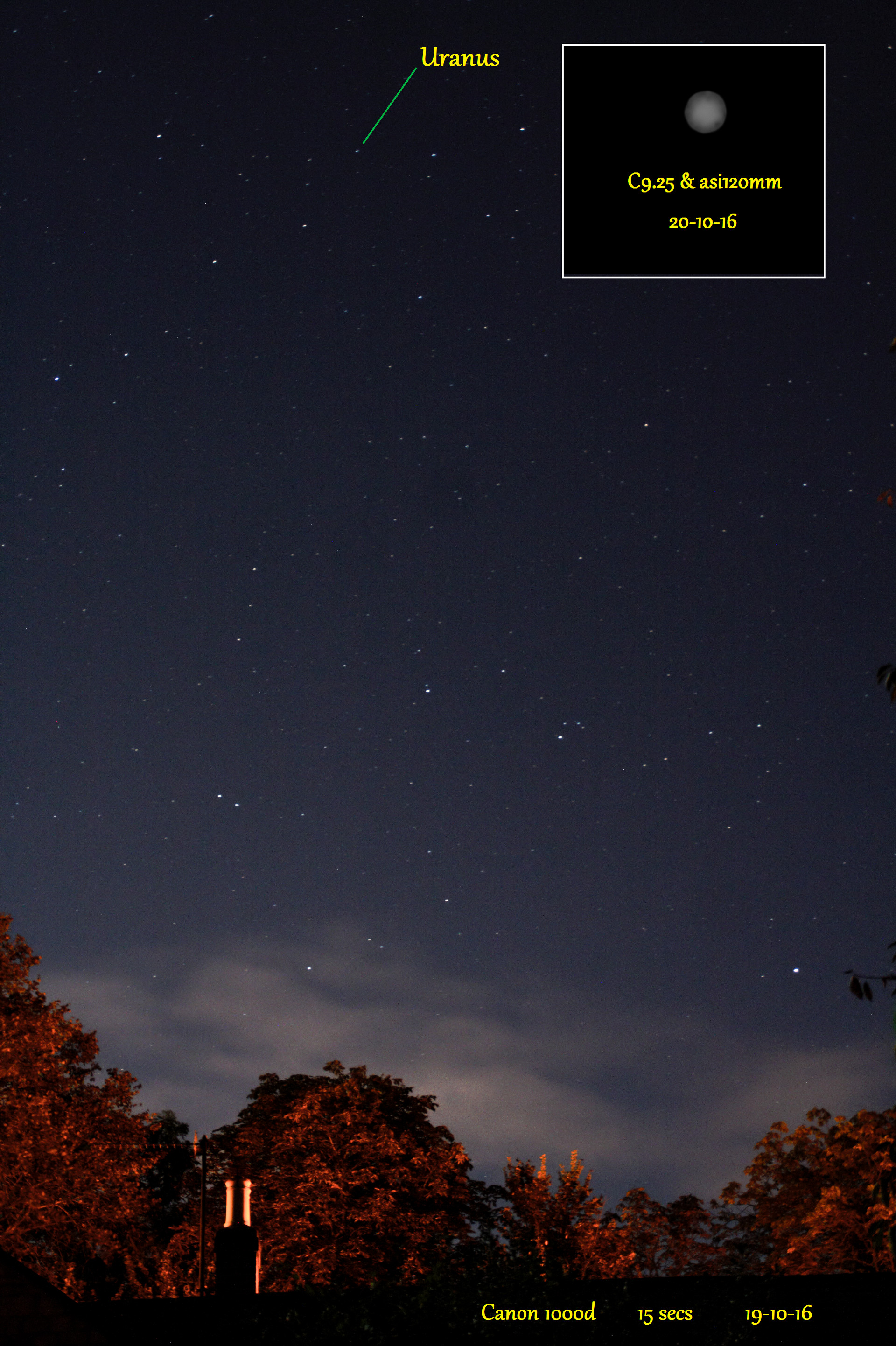October 2016 Skynotes: Uranus
19th October 2016
Uranus, the seventh planet from the Sun, is often classified as an "ice giant" to distinguish it from the gas giants like Jupiter and Saturn. The interior of Uranus is mainly composed of ices and rock. Uranus' atmosphere is mainly of hydrogen and helium, but it contains more "ices" such as water, ammonia, and methane, along with traces of other hydrocarbons.
It has just past opposition so it is 100% illuminated. It is at 6th magnitude so that it probably out of the range of sight unless you have very good sight and very clear non light-polluted skies. Uranus rises around 8pm in the East and sets around 6am in the West. It is best to observe it around midnight when you are looking South and the atmosphere is at is thinnest.
It can be located with binoculars but looks like a star so can be hard to find. Therefore, I used a PC based star atlas called Stellarium to give you the night sky from your location. I found Uranus on the PC, then located it with binoculars by star hopping – using constellations and stars nearby to point to the location.
In a telescope you can see that Uranus is a disc and different from the other stars which are points of light. In my 9.25" telescope you can see Uranus as a disc and by adding a high frame rate camera you take lots of images and stack them to produce an image.
This image was a single 15 second capture at ISO 1600. It was taken on a Canon 1000D DSLR camera on a tripod with a zoom lens set around 70mm. It was taken looking south over my house. The inset image was taken on a C9.25sct with a ZWO asi120mm monochrome camera at x2 and heavily cropped.
Matt Armitage

